Like any other plant, bamboo needs three basic things in order to survive. Soil, sun and water. And as a gardener, one of your greatest responsibilities is to provide your bamboo with water. So, it’s one of the first questions any grower will have to ask. How much water does my bamboo need?
There’s a lot of variation between species and growing conditions, but in general, bamboo needs to be watered regularly. The shallow rhizomes and roots don’t need very deep watering, but they should be watered frequently, at least once a week. Young bamboo and fresh transplants will need more water, and in the heat of summer, you may need to water them two or three times a week. But be careful not to overwater your bamboo, as it doesn’t like to be completely saturated, standing in a pond or a puddle. Bamboo in tropical regions with more than 1500 mm (59 inches) of annual rainfall shouldn’t need additional irrigation.
In the following article — first published in August 2022 and last updated in February 2025 — we’ll look at some specific conditions that could affect your bamboo’s watering needs. We’ll also describe some signs to look out for and some practices to avoid. In the end, water is essential for your bamboo, but it’s not hard to provide.
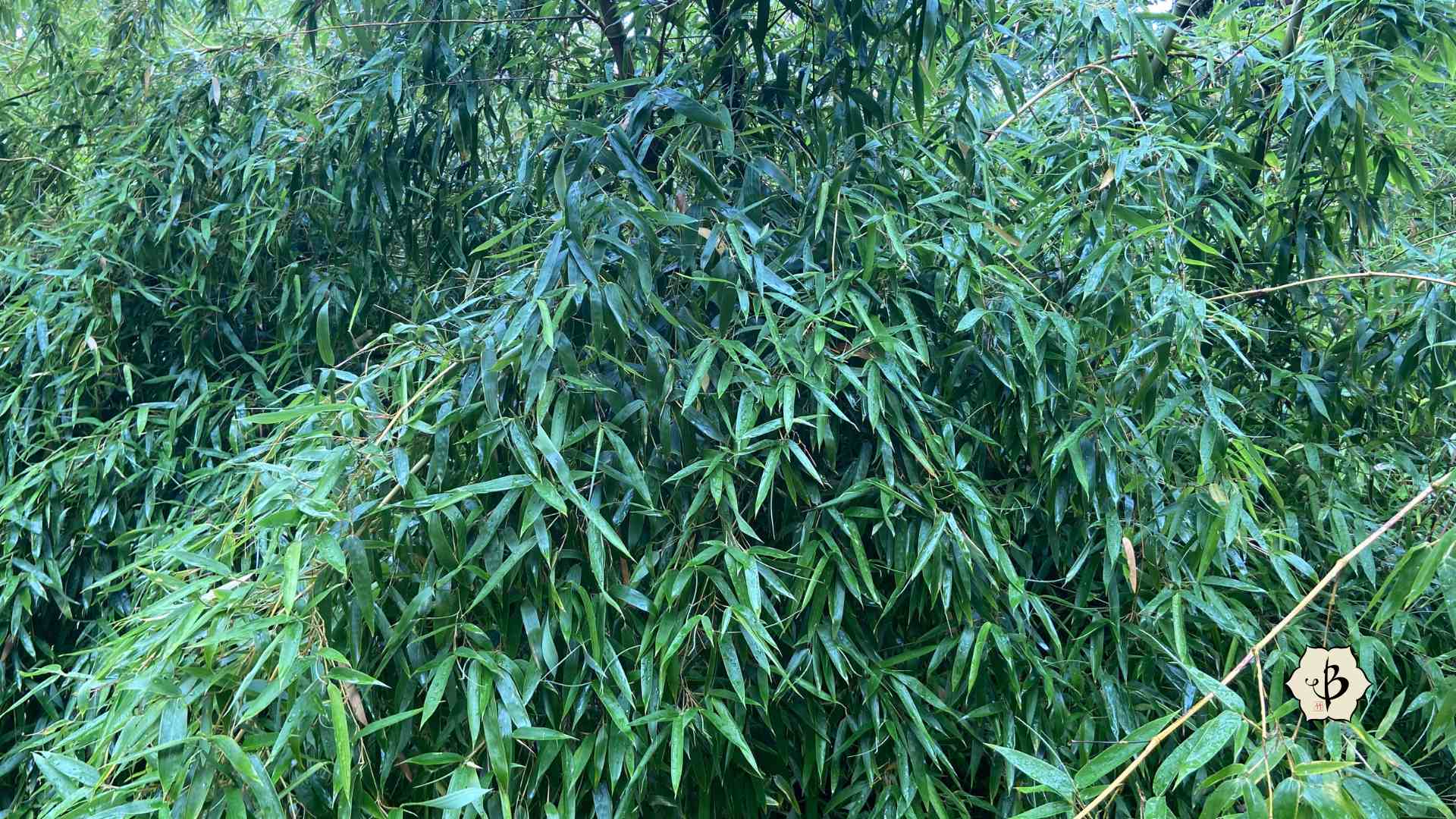
How often do bamboo plants need watering?
If your bamboo is well established and growing directly in the ground, in decent soil with reasonable drainage, you should probably water it at least once a week. As with a lot of grasses, bamboo likes to keep somewhat moist, but the shallow roots do not require very deep watering. And the roots should be allowed to dry out in between watering.
We often think of bamboo as a tropical plant, and many species are. But they are more drought-tolerant than you might expect. Once the bamboo is established, with a well-developed rhizome network, producing fresh shoots on a regular basis, it’s incredibly resilient. Those hefty rhizomes can actually retain water pretty well.
Of course, the plants always need more water in the summer, when the days are long and the temperatures go up. In a summer heat wave, in a dry climate, you’ll probably need to water the bamboo every other day.
Young, tender bamboo also needs more care. If you have a new bamboo plant that just went into the ground, or a fresh rhizome cutting that you’re trying to propagate, you’ll want to water it two or three times a week. The bamboo also needs a bit more water when the plant is putting up new shoots and when the weather gets unusually windy. Keep the soil moist, but not soggy.
Ultimately, it’s pretty hard to kill a mature bamboo plant. But waterlogged roots can be a serious problem, leading to rotten rhizomes. Insufficient water can also produce a lot of stress, impairing the plant’s ability to generate new shoots. But bamboo can usually recover pretty quickly from a spell of under-watering.
Signs to look for
There are a couple simple signs you can look for when you’re trying to determine whether your bamboo is getting too much water or not enough. The first thing to do is to check the soil. If you can wiggle your finger a couple inches into the dirt, you can get an idea of how dry it is. If you can’t detect any moisture at two or three inches, then it’s time to water.
But if you have a lot of mulch around your bamboo (see below), or you just don’t like to get your fingers dirty, you can look for other signals. The first sign of a thirsty bamboo is that the leaves will curl in on themselves. When you see this happen, the plant probably needs water.
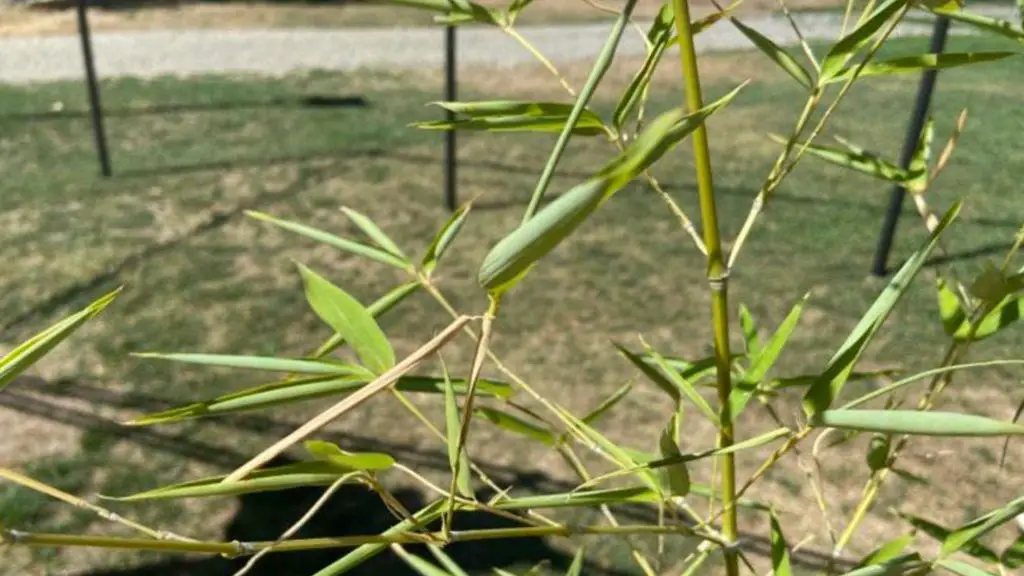
Sometimes intense sunlight can do this as well, so double-check the leaves after the sun starts going down, when the plant is out of direct sunlight. Leaf curl can also happen when the plant is completely waterlogged, so definitely make sure that’s not the case.
Browning around the tips of your bamboo leaves is another issue to watch for. This can be the result of too much heat and not enough water. But it might also happen from too much watering. Consider the weather and when the last time you watered it, and adjust accordingly. If it’s been super hot and dry, give the bamboo a drink. If the weather’s been normal and the plant’s getting regular water, then cut off the watering for a week and see what happens.
Also see our article on Troubleshooting Tips with Bamboo.
Mulching your bamboo for water retention
In hot and dry climates, where the water evaporates quickly, it helps to put mulch around your plants. This insulates the roots and reduces evaporation. Try to water under the mulch, either with a hose or a drip line, so you’re soaking the soil and not just the leaves and wood chips on top.
Mulching is also very important in cold winters, like wrapping the bamboo rhizomes with a warm blanket. The only drawback is that it makes it more difficult to check the moisture of the soil. But it’s not that hard to brush the mulch aside and poke around with your fingers.
Watering bamboo in pots
Bamboo and its vigorous rhizomes are much happier when they’re growing directly in the soil. The natural earth typically holds moisture better and also drains better. So potted bamboo has a greater risk of both under-watering and over-watering. The best solution is just to pay attention.
The biggest problem I’ve had with potted bamboo is that it gets root-bound. Eventually, the roots can get so tightly bound that the water won’t even penetrate the soil. It just sits on top and rolls off or evaporates. When this happens, it’s time to find a bigger pot, or move the plant into the earth with a good root barrier.
*Be aware, if the plant is seriously root-bound, it will need more than just a transplant. You’ll have to break up the root ball, probably with a good hand saw. And you’ll want to cut away the sides and bottom of the root mass, where the rhizomes are turning back on themselves. Keep the rootball wet as you do this, and don’t panic if a couple culms don’t survive the move.
Growing bamboo directly in water
A lot of people imagine bamboo growing in tropical swamps and Japanese koi ponds. But bamboo doesn’t actually grow this way. There are a couple varieties of so-called water bamboo, which are more adaptable to growing in saturated soil, but even these can only survive a handful of days in such soggy conditions. Ultimately, it’s easier to kill a bamboo by overwatering than by underwatering.
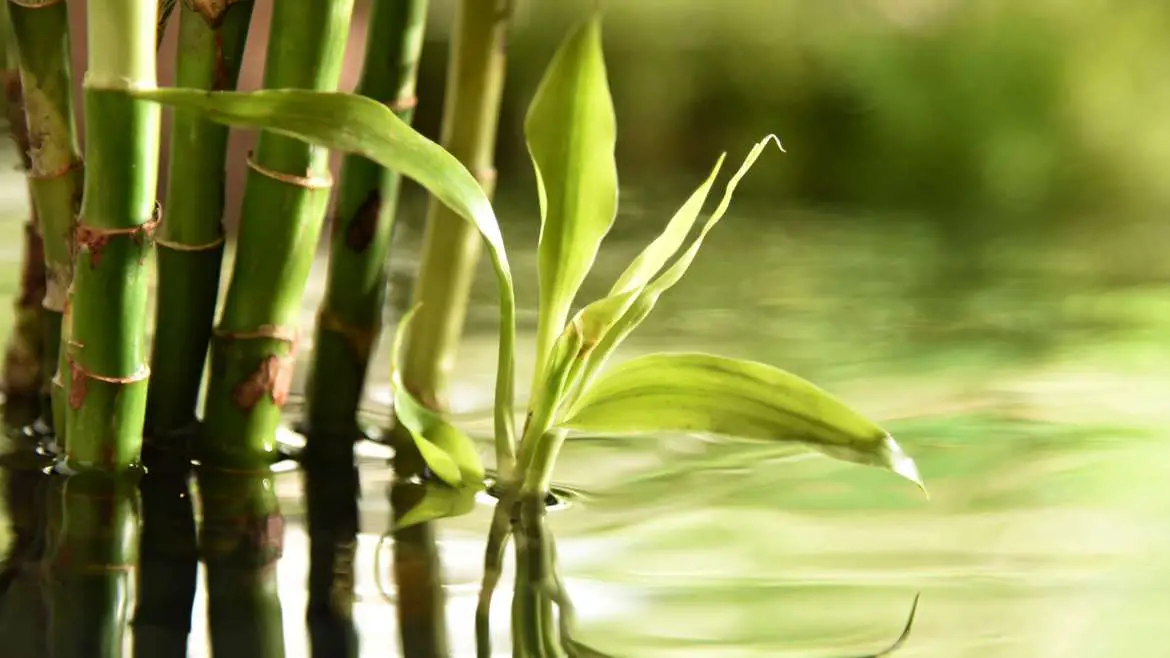
Over time, the bamboo roots will begin to rot if they are growing directly in a pond or a mud hole. Try planting some horsetail or papyrus instead. You can also plant your bamboo near the edge of a pond or waterway. But you’ll have to let the plant and its rhizomes decide for themselves just how close to the water they’ll go.
If you have a vase of water with bamboo growing in it, then it’s probably not bamboo. This is almost certainly Lucky Bamboo, or Dracaena sanderiana, which is not the same as true bamboo. Lucky Bamboo is an indoor house plant that can thrive with minimal sunlight in a pitcher of water. But it is not related to bamboo and does not even belong to the grass family.
Irrigation requirements for bamboo farming
The exact irrigation needs for farming bamboo at a commercial scale are a bit difficult to state with certainty. As with so many other issues, a lot depends on which species of bamboo you’re farming. And until quite recently, bamboo was only being grown in places where was native, such as China’s Moso forests, the Colombian highlands, and the rainforests of Southeast Asia and Indonesia. The vast majority of commercial bamboo still comes from these native habitats.
But as bamboo farming attracts more and more interest in other parts of the world, including Africa, Europe, and North America, the question of how much water it needs becomes very important. In general, bamboo is comparable to a fruit orchard or an olive orchard. As a rule of thumb, regions with a history of sugar cane farming can typically support bamboo cultivation quite well. It requires a fair amount of water in the first years, but once it’s established, the plants are quite resilient.
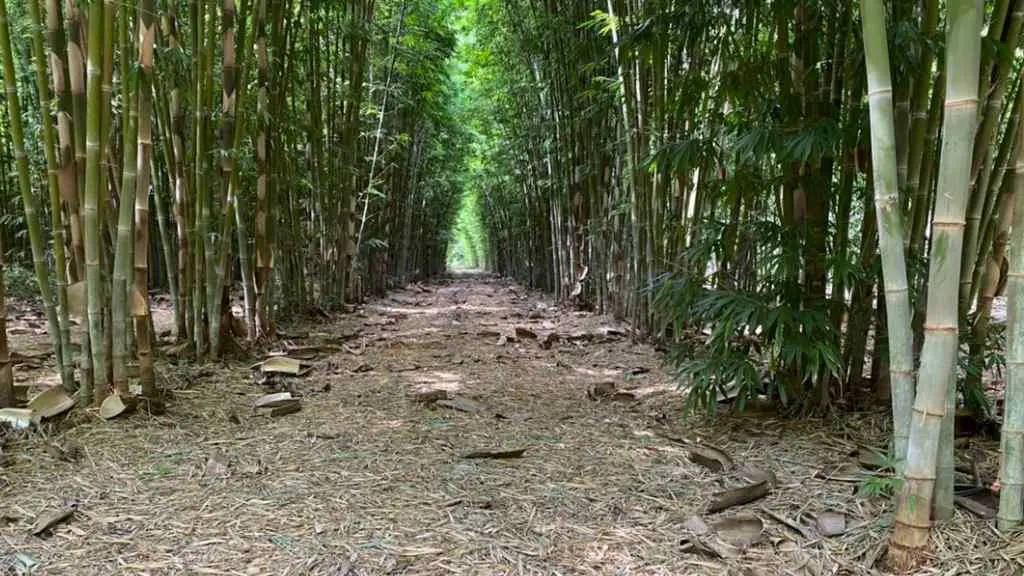
But if you’re trying to be commercially competitive, more water with result in faster growth and larger culms. Just because the bamboo can survive without irrigation, natural rainfall might not be enough to produce a substantial cash crop. Tropical, clumping bamboo continues to perform best within 20-25º of the equator, and where precipitation is generous. But with irrigation, the range can be expanded dramatically.
In Southeast Asia and Indonesia, annual rainfall varies from 1200 mm to 2500 mm. Some microclimates may get closer to 3-4000 mm. In Malawi, they farm D. asper with about 1300 mm of annual rainfall and without added irrigation. It’s not as much rain as it gets in its native habitat, but it’s adequate.
In Colombia, they say that Guadua angustifolia will do best with 2000-2500 mm of annual rainfall, but it can tolerate a range from 1300-5000 mm. Moso bamboo, a temperate variety from China, has an optimal range of 800-1800 mm of annual precipitation, notably less than its tropical cousins.
Water needs of bamboo vs cotton
Among its many environmental advantages, which include producing more oxygen than trees and growing faster than any other plant on earth, bamboo also takes far less water than cotton.
Cotton cultivation requires about three times as much water as bamboo. For the most part, commercial bamboo grows where it’s native and lives off of natural rainfall. For this reason, it needs much less irrigation and special attention. The water footprint of cotton farming, especially in India and Uzbekistan, is a serious factor that Western consumers can easily ignore, but not forever.
Further reading
If you enjoyed this article about how to water bamboo, please consider sharing the blog post or subscribing to our mailing list. You might also be interested in some of the following links:
- Growing bamboo: A how-to guide
- Bamboo and gray water
- Fertilizing your bamboo: Simple solutions
- Bamboo anatomy
- Bamboo flowering
- Growing bamboo in the desert
- Bamboo and carbon sequestration
- Best cold hardy bamboo for snowy climates
- Growing bamboo indoors
FEATURED PHOTO: Square Bamboo in Kew Royal Gardens, London, enjoys ample rainfall. Photo by Fred Hornaday.

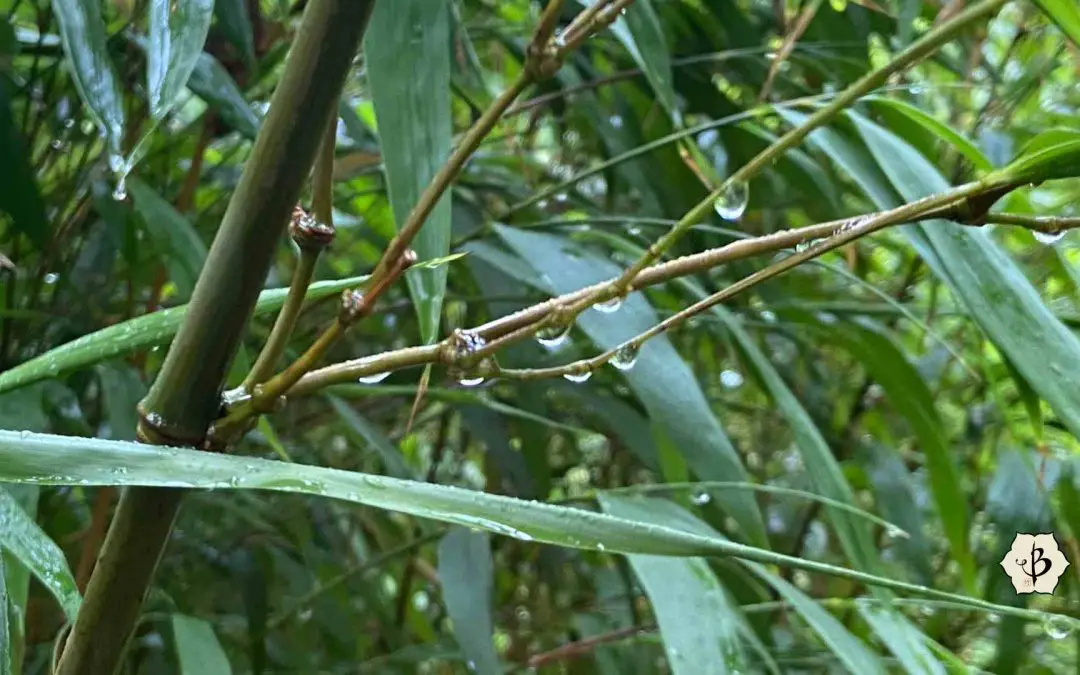
























Moso needs rainfall of 1800mm means every square Meter get 1800mm of water or 1800 litres of water per year? What is the optimal temperature for Moso to have the maximum growth?
What is the best feed to give bamboo and when and how often
Check here: https://bambubatu.com/fertilizing-your-bamboo-simple-solutions/